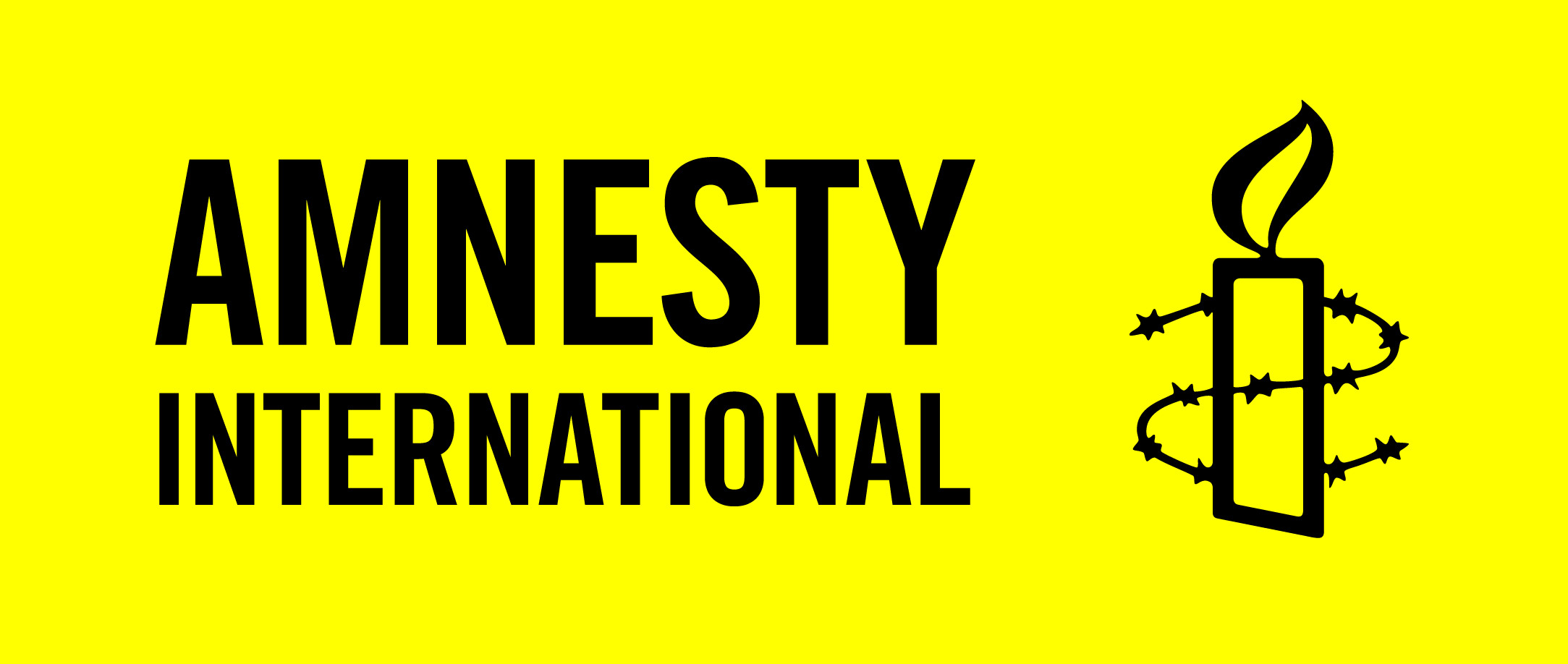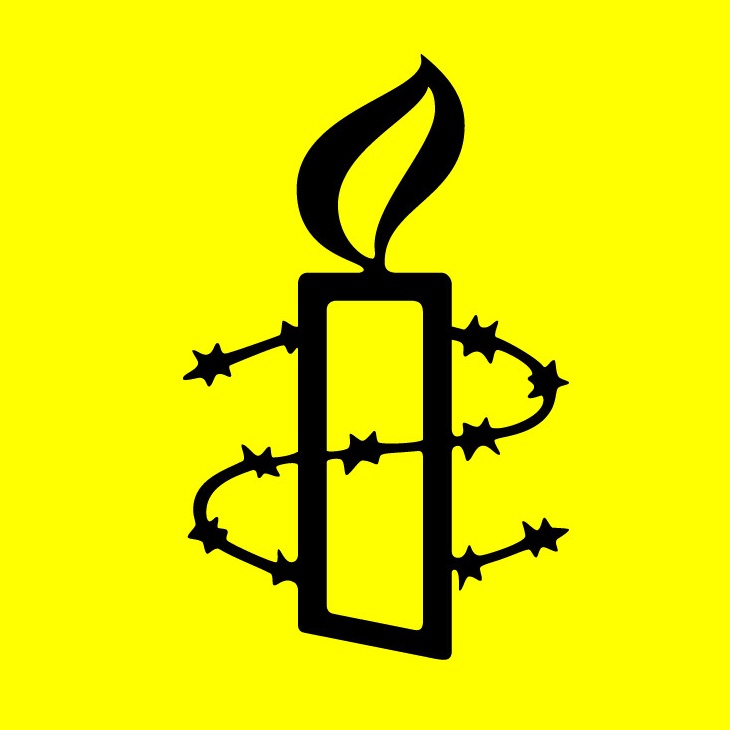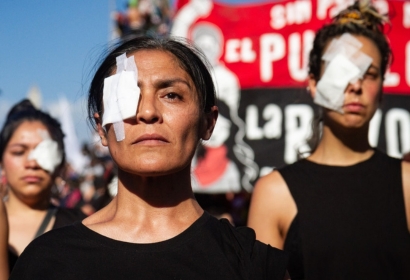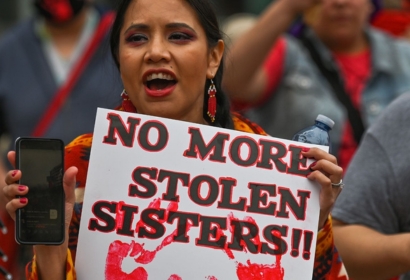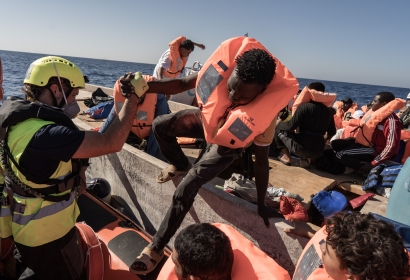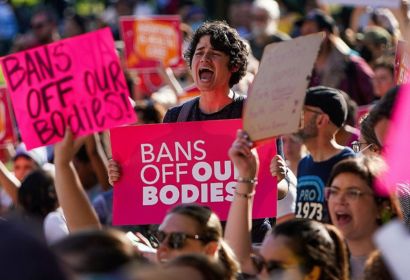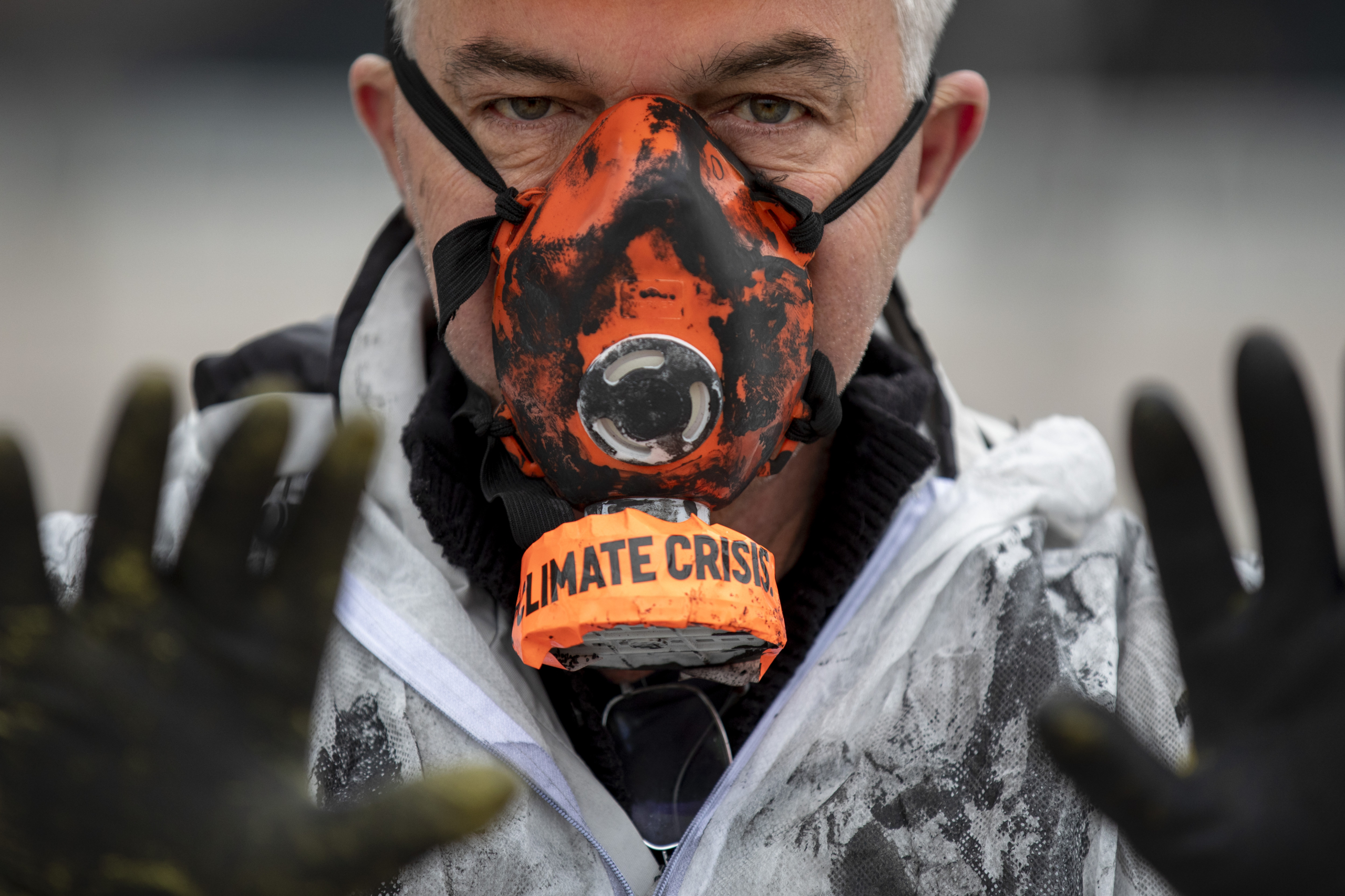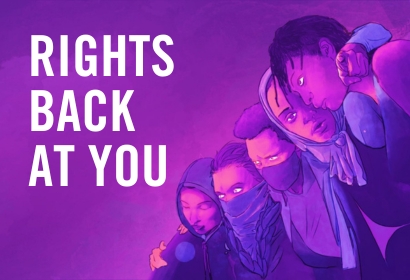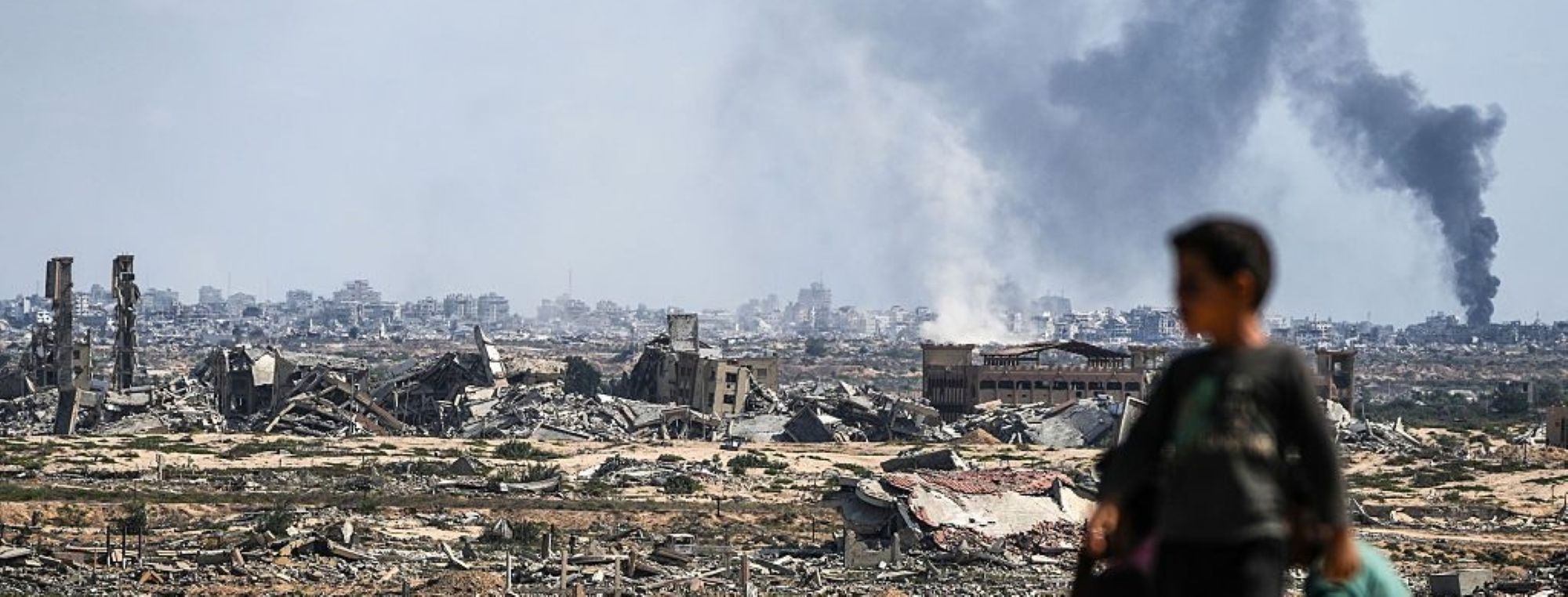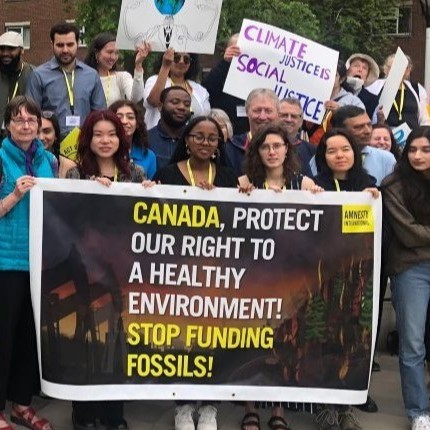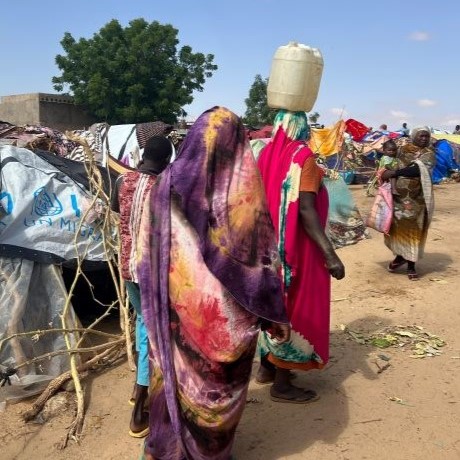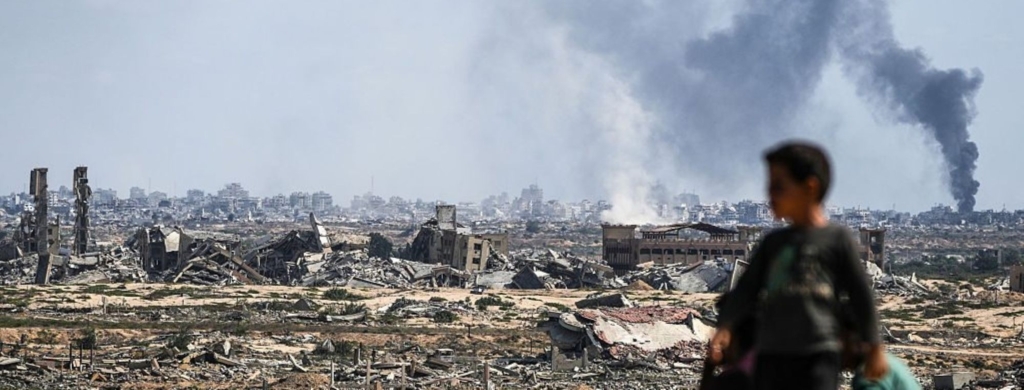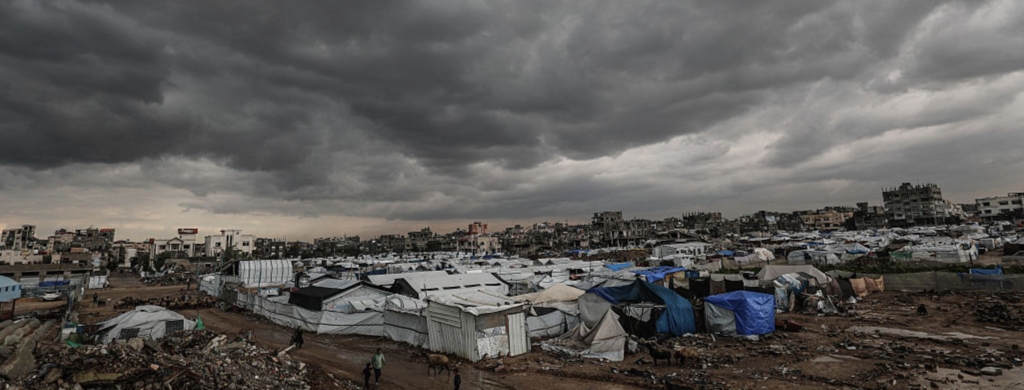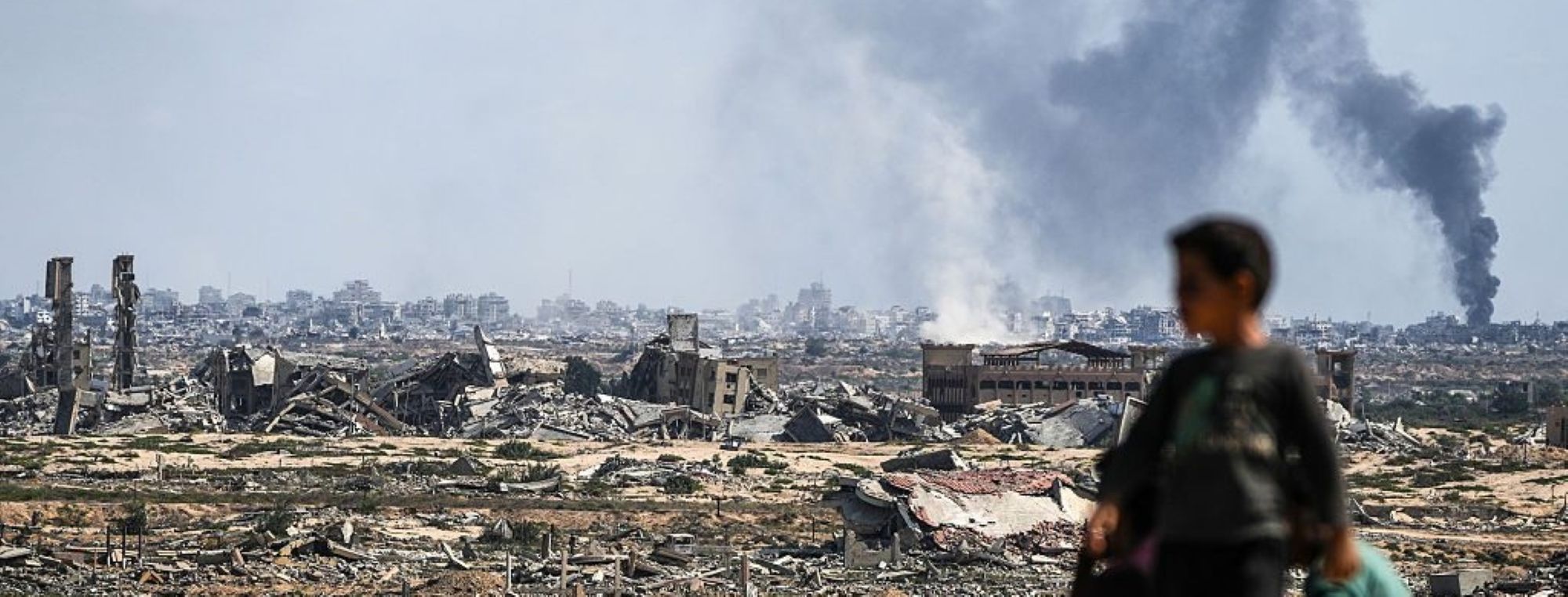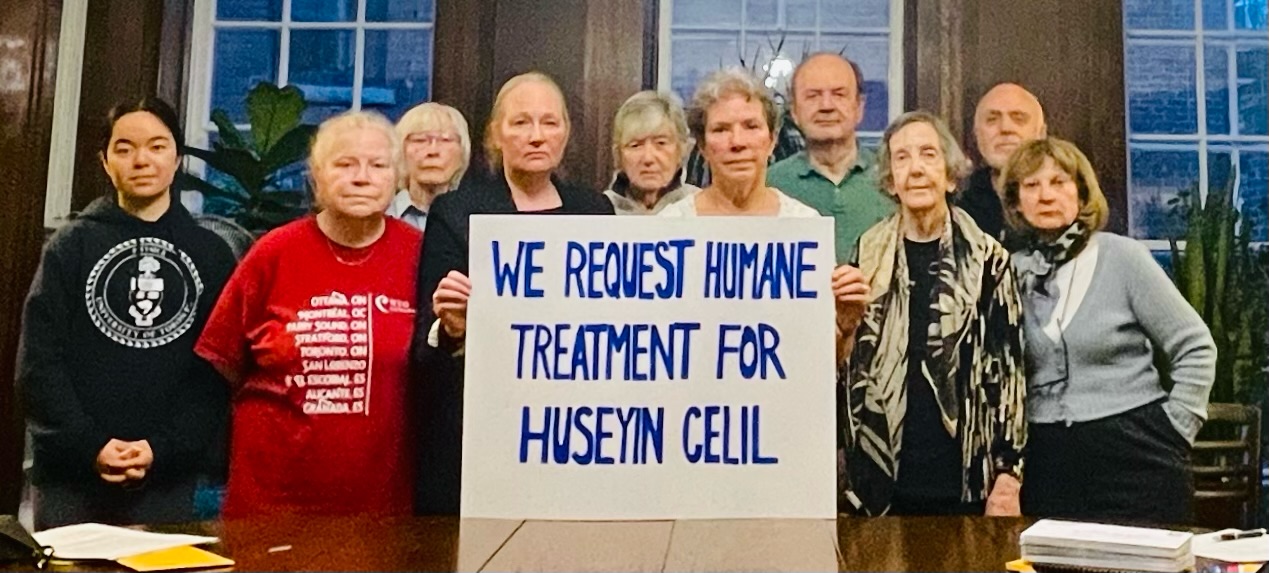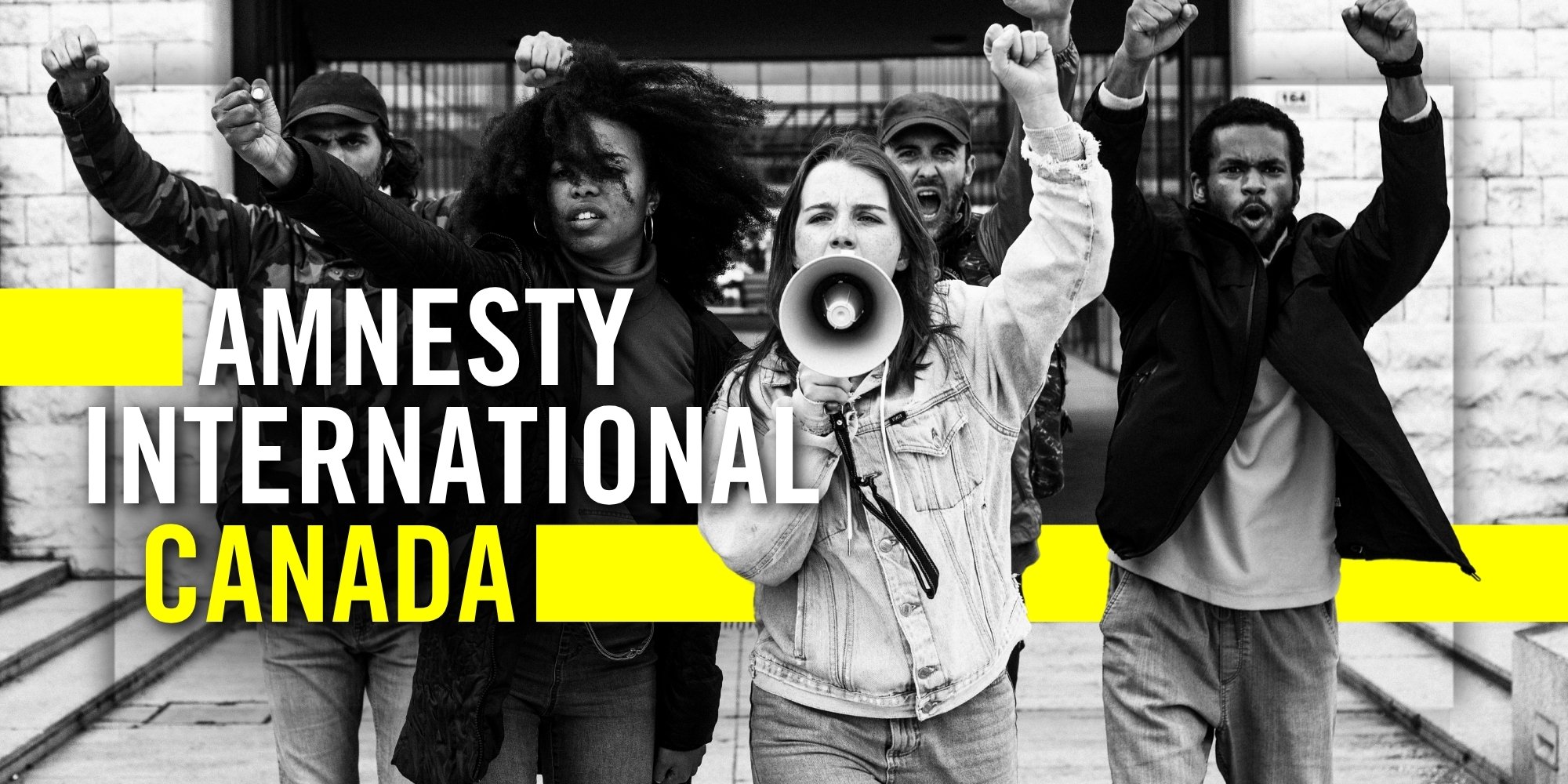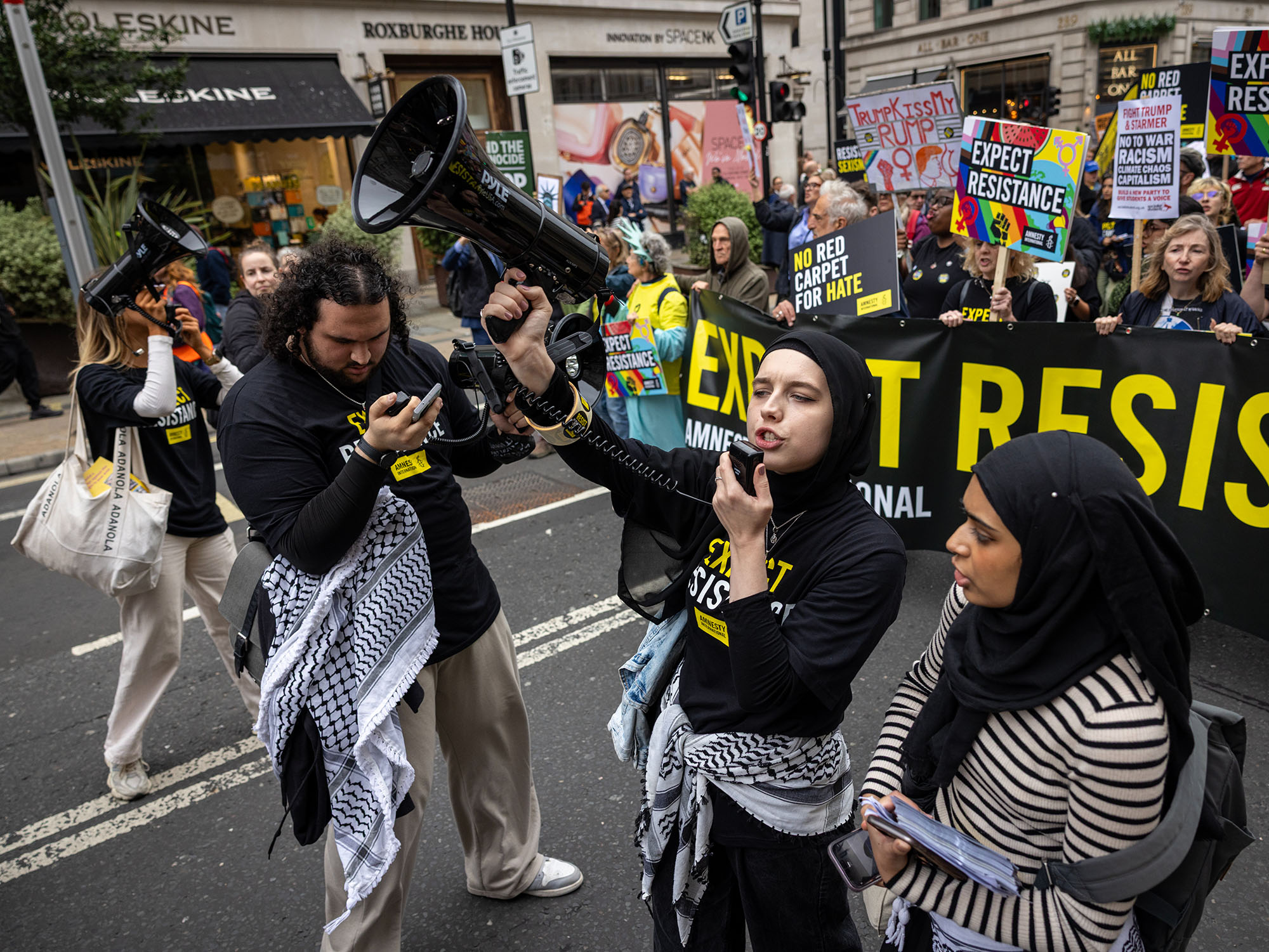The intensification of Israel’s brutal military offensive in Gaza City since mid-August has unleashed a new catastrophic phase of mass forced displacement, forcing hundreds of thousands of Palestinians – many of whom have already been uprooted multiple times -into overcrowded enclaves in the south of the occupied Gaza Strip that lack access to clean water, food, medical care, shelter and life-sustaining infrastructure, Amnesty International said today.
Since it escalated its operations in Gaza City, the Israeli military has adopted a series of measures designed to sow panic among the city’s residents and to forcibly displace them, knowingly, into unsafe areas unequipped to receive them. These tactics include issuing unlawful and sweeping mass displacement orders, beginning a campaign to destroy multi-story residential buildings where hundreds of displaced families have been sheltering, deploying explosive remote-controlled vehicles to carry out controlled demolitions, as well as intensifying aerial bombardments on already overcrowded neighborhoods and refugee camps.
“As Israel steps up its cataclysmic onslaught, it appears hell-bent on obliterating Gaza City, deliberately driving out its entire population, levelling large swathes of the city, and seizing full control. For nearly two years, Palestinians civilians throughout the Gaza Strip have been bombarded, starved, and subjected to wave after wave of mass forced displacement, as Israel continues its genocide in Gaza. Deliberately inflicting yet another devastating wave of mass displacement amidst this suffering is not just inhumane, it is a flagrant violation of international law,” said Erika Guevara Rosas, Senior Director of Research, Advocacy, Policy, and Campaigns at Amnesty International.
On the morning of 1 October, the Israeli military announced that movement on al-Rashid (coastal) road from south to north would be blocked by noon, indicating that those displaced would not be allowed back and also obstructing movement of the few transportation vehicles available for transferring displaced people and their belongings. Hours later, Israeli Defence Minister, Israel Katz, issued the following statement on X (formerly Twitter): “This is the last opportunity for Gaza residents who wish to do so to move south and leave Hamas terrorists isolated in Gaza City itself face-to-face against IDF action which continues at full intensity. Those who stay in Gaza [city] will be terrorists and terror supporters.”
“Such is the level of impunity granted to Israeli leaders that the country’s defence minister can unashamedly issue a public statement that effectively nullifies one of the core principles of international humanitarian law: the obligation to distinguish at all times between civilians and military targets. By threatening that the hundreds of thousands who remain in Gaza City will be treated as ‘terrorists’ and ‘terror supporters’ Israel’s defence minister is effectively giving a green light for war crimes, including the targeting of civilians and imposition of collective punishment, said Erika Guevara Rosas.
Hospitals and health facilities in Gaza City are collapsing and humanitarian organizations, including Médecins Sans Frontières and the International Committee of the Red Cross, have been forced to suspend their operations in the city as a result of the latest escalation.
While there are no accurate figures for the number of people who have been forcibly displaced since from Gaza City since mid-August, the United Nations Office for the Coordination of Humanitarian Affairs (OCHA) reported that the site-management cluster has recorded over 400,000 movements from north to south Gaza, mainly to Deir al-Balah and Khan Younis. The waves of displacement have particularly escalated since 5 September, when the Israeli military announced and began a concerted operation targeting high-rise buildings, followed by a mass displacement order to the whole of Gaza City on 9 September.
However, hundreds of thousands of civilians remain trapped under relentless bombardment in Gaza City and the north of the Gaza Strip. Many are unable to flee because they cannot afford transportation costs or because the small area designated by Israel for evacuation is overcrowded and not fit for human habitation. For people with disabilities, older people, and people who have long exhausted their support networks, there is effectively no choice but to remain where they are.
“Whether people are staying in Gaza City because they have nowhere else to go, lack the means to flee amidst a dire shortage of fuel and shelter as a result of Israel’s unlawful blockade, or cannot bear yet another humiliating displacement and its consequences, Israel cannot be allowed to deny civilians in Gaza City the protection they are entitled to. They must be granted unimpeded access to services and supplies indispensable to their survival and must be protected against unlawful attacks,” said Erika Guevara Rosas.
Amnesty International interviewed 16 displaced people who were forced out of Gaza City between 6 and 17 September. They were staying in four different areas of the Deir al-Balah governorate, where they have no access to basic services. For toilets, they have to dig a small hole in the ground just behind their tent and surround it with a thick nylon cover. Younger children, no older than 10, are tasked with carrying a gallon of water to their tent. Seven of the 16 displaced people interviewed had to make the grueling journey from Gaza City to Deir al-Balah, some 20km, on foot.
‘Leaving my sick daughter behind is my worst nightmare’
On 5 September, the Israeli military announced the start of a campaign to demolish high-rise residential buildings, many already battered by months of Israel’s relentless bombardment. These buildings, and the clusters of tents in their immediate vicinity, had been serving as shelters for thousands of people, mostly displaced families. The buildings were often surrounded by tents in squalid, overcrowded makeshift camps housing people mostly from North Gaza and East Gaza City. The majority of those displaced have already been forcibly displaced multiple times and have nowhere safe to go or are unable to leave because they are malnourished, sick, injured or have disabilities. Demolitions therefore uprooted thousands, compounding a spiraling displacement crisis crafted and engineered by Israel.
Mirvat, a 46-year-old mother of four, has been sleeping on a traffic island along Salaheddine street in Deir al-Balah after her seventh displacement. Due to chronic pain in her legs, the journey from Gaza City to the central area, on foot, took her two days.
Mirvat told Amnesty International: “My daughter, 25, has cancer, but I had to leave her behind in Gaza City because she cannot make the journey on foot and because as long as we cannot find a proper shelter here, it’s impossible for her to move. She needs to go to the hospital every month to receive treatment, which she has not been able to do since the end of August, because the road from where she is staying in Tal al-Hawa to al-Nasr Street is too dangerous. Leaving my sick daughter behind is my worst nightmare.”
Weam, a mother of three, was also forced to leave her two children, aged seven and five, with their grandmother in Gaza City until she finds shelter in Deir al-Balah. She said: “I can sleep on the street, but my children are too young. Can you imagine the choice that we have: in Gaza City, my children are staying at a damaged house but the bombing doesn’t stop; here, it is quieter but we have no roof over my head.”
‘The fear of these explosive robots is what forced us to leave’
Israeli forces continue to deploy explosive-laden remote-controlled vehicles, dubbed ‘robots’ by residents, to carry out controlled detonations across Gaza City. Seven people interviewed by Amnesty International said the advance of these vehicles into their neighborhoods left families with no option but to abandon their homes in fear for their lives.
Firyal, a mother of six, who was displaced from Shuja’iya on 3 April 2025, sought refuge in al-Jalil secondary school for girls, turned into a makeshift camp for displaced people, in Tal al-Hawa, a neighbourhood of Gaza City. She said she has been looking for a place to stay for over 10 days to no avail, noting that schools turned into shelters have already exceeded their capacity and that renting privately owned land has become prohibitively expensive.
She told Amnesty International that all night they heard the terrifying sounds of bulldozing: “The fear of these explosive robots is what forced us to leave; we set up our tent near the beach, but then they dropped leaflets ordering us to leave again, so we were displaced on 17 September. We could not afford to hire transportation…we had already paid everything we have just to buy canned food, so we moved from Gaza City to Deir al-Balah on foot, leaving in the morning, and arriving at night. We couldn’t find anywhere to stay, so as you see we are literally sleeping on the street, on this traffic island in Salaheddine street. We use some of the children’s clothes as blankets. The tent we used to have was torn to pieces after the Israelis bombed a nearby building next to us. We are constantly at risk of being trampled upon by the trucks that pass through here. There is nothing to protect us.”
‘Nowhere else to go’
Over the past month hundreds of thousands of Gaza City residents have been displaced either to Deir al-Balah governorate or to al-Mawasi and Khan Younis. Many of those who stayed could not leave because they could not afford to pay for transport, amidst the extreme shortage of fuel. Even if they could afford to pay for transportation, buying a tent, renting a small apartment, or renting a plot of land where the tent could be pitched is beyond the already depleted resources of most.
Raeda, who has been displaced four times since April 2025, first from Shuja’iya to al-Nafaq, then to Tal al-Hawa in Gaza City and now in Al-Zawayda, near Deir al-Balah said:
“I have been sleeping on the streets, without even a tent, for the past 10 days. We are a family of seven, all of us sleep in the open; we cannot rest; we don’t have any privacy, there is no life here. We haven’t showered for days.”
Another displaced woman, Shireen, and her family stayed in al-Shati refugee camp despite leaflets informing them about displacement orders as they had nowhere to go and all the places they asked about in the south were overloaded. On 15 September 2025, they received a phone call from the Israeli military ordering them to leave by name. Shireen said: “We stayed despite the heavy bombardment; we lost count of the number of times we escaped death; every night was worse than the one before; a building near us was bombed and completely destroyed, but we left after the Israeli army called us and ordered us to leave. We told the guy on the phone that we have nowhere to go. So, we came here to Al-Zawayda and since our displacement we have been sleeping in the open air.”
This was the eighth time they have been displaced since the beginning of the war, but this time was the hardest because, as she said: “At least before we could carry with us a tent; we had our solar panel; we had some money; now we have nothing; we paid everything we have to secure the transportation fees.”
“With people and families stretched beyond every limit, a humanitarian catastrophe is further deepening in all its cruelty, day after day. Repeated forced displacements under inhumane conditions, the systematic destruction of life-sustaining infrastructure, and the suffocating blockade form part of Israel’s deliberate policy calculated to bring about the physical destruction of the Palestinians in Gaza,” said Erika Guevara Rosas.
“Palestinians in Gaza have long been passed the point of no return, each day costs lives and crushes humanity. States must uphold their obligations under international law to bring Israel’s genocide against Palestinians to an end. Symbolic acts, such as recognizing the State of Palestine while continuing to supply arms to Israel and failing to address impunity for atrocity crimes, are not effective. States must use their leverage to secure an immediate ceasefire and force Israel to stop its genocide in Gaza. The unlawful occupation of the entire occupied Palestinian territory must end, and Israel’s system of apartheid must be dismantled without delay.”
Note: For the interviewees’ safety, the organization has withheld last names.
